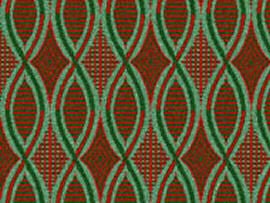
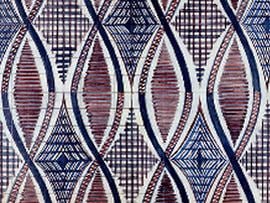
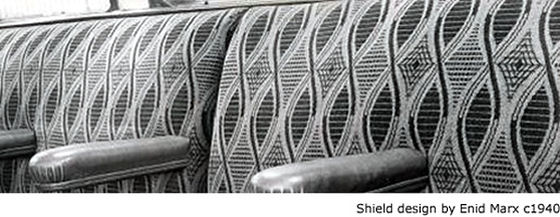
In 1937, London Transport commissioned Enid Marx to create customised seating fabrics for its tube trains and buses.
The colourful, graphic upholstery patterns on London’s public transport are iconic and instantly recognisable. And as this year sees the 150th anniversary of the first underground journey on the Metropolitan Railway, I thought we’d mark the occasion by featuring some of Enid Marx’s work.
Her inital brief was to create very hard-wearing, woven “moquette” fabrics. The criteria got quite specific, as apparently “the design was to look fresh at all times, even after bricklayers had sat on it”. What an image that conjures up, don’t you think?
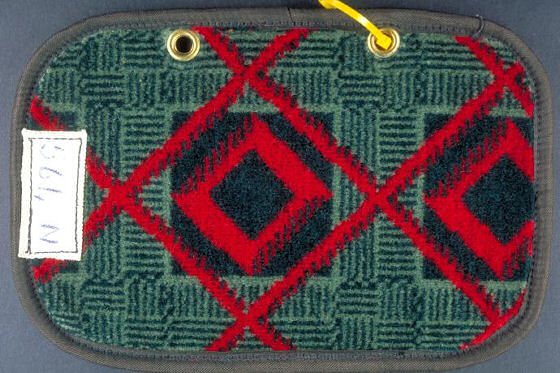
Enic Marx was one of the first textile designers to be chosen for this project. and created several very popular moquette designs. Above is a sample of her pattern named Brent, designed circa 1937.
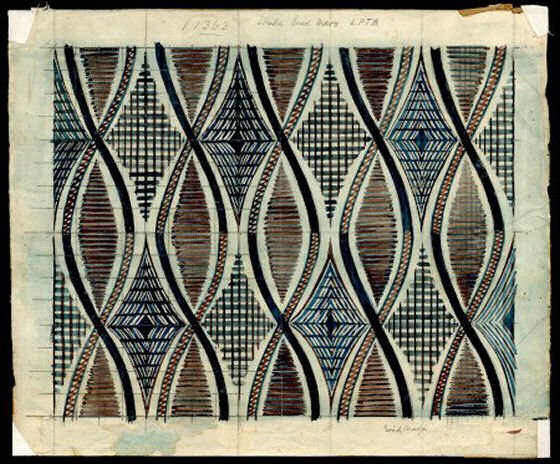 And above is her original sketch for the design Shield which was used on the Bakerloo, Northern and District lines between 1938-45.
And above is her original sketch for the design Shield which was used on the Bakerloo, Northern and District lines between 1938-45.
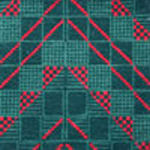
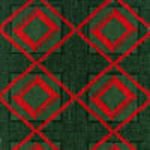
Above are samples of the Double Diamond and Chevron moquettes. If you’re interested in more moquette design geekery/history, you’ll find lots of information and images from the London Transport archives at the London Transport Museum website.
Enid Marx trained at the Central School of Art and Crafts (1921-2), where she studied drawing, pottery and printed textile design. She then went on to further studies of wood-engraving and painting at the Royal College of Art.
However, she apparently failed to impress her wood-engraving tutor who said she couldn’t draw. She, in her turn, thought the classes were a waste of time. Fellow student Eric Ravilious taught Enid instead, and passed on to her what he had learned himself during his own classes. Other contemporaries of hers at the RCA included Edward Bawden and Barbara Hepworth.
According to Wikipedia:
After leaving college Enid Marx then worked for many years in her studio in Hampstead producing block-printed textiles. She used simple patterns that were often geometric or simple organic shapes and blended modernist elements with motifs taken from British folk art.Marx failed her Final Diploma Assessment (led by Charles Ricketts) in 1925, and she left the school that year.
Her work was judged to be “vulgar”, reflecting her interest in popular forms and rejection of the traditional definition of fine arts. Nearly sixty years later, in 1982, the College awarded her an honorary degree.
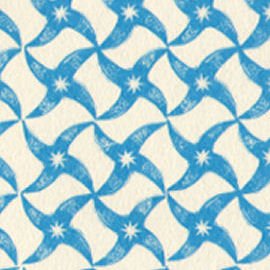
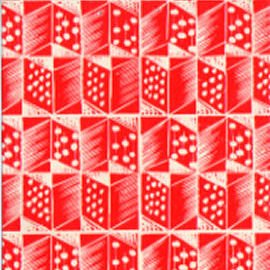 During that time she also produced designs for patterned papers for the Curwen Press to be used as end papers in bookbinding. These wonderful papers are still produced today (see examples above) by the Judd Street Gallery.
During that time she also produced designs for patterned papers for the Curwen Press to be used as end papers in bookbinding. These wonderful papers are still produced today (see examples above) by the Judd Street Gallery.
Other work and commissions included book illustrations and book jacket design, wallpaper, stamps, and printed and woven textiles. Along with her famous moquette designs for London Transport, other Enid Marx fabrics included upholstery designs for utility furniture in collaboration with Gordon Russell.
Enid Marx also taught and inspired many young artists, including Peter Blake. She was elected to the faculty of Royal Designers for Industry (RDI) in 1944 and died in 1998 at the age of 95.
The Marx-Lambert Collection at Compton Verney, in Warwickshire, is a must-see for Edith Marx fans. This unique collection recently received funding to be redisplayed in its own spacious gallery. There you’ll find work produced by Enid Marx alongside a large number of pieces of folk art collected by Marx and her friend Margaret Lambert.





Comments are closed.